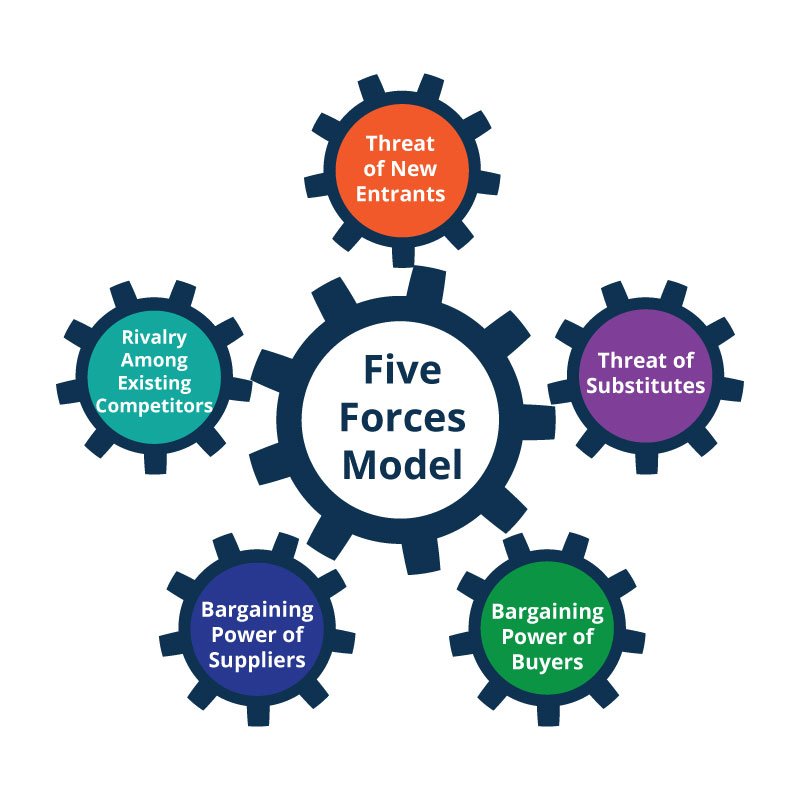Porter’s Five Forces: Navigating Competitive Markets
Porter's Five Forces is a model used to analyze the competitive environment in which an organization operates. Developed by Michael Porter in 1979, the model is based on the idea that the intensity of competition in an industry is determined by five forces: supplier power, buyer power, threat of new entrants, threat of substitutes, and rivalry among existing competitors.
The Five Forces of Porter’s Five Forces
Supplier Power: This refers to the bargaining power of suppliers, and the degree to which they can influence the prices and quality of goods and services.
Buyer Power: This refers to the bargaining power of buyers, and the degree to which they can influence the prices and quality of goods and services.
Threat of New Entrants: This refers to the ease with which new competitors can enter the market and compete with existing firms.
Threat of Substitutes: This refers to the availability of substitute products or services that can meet the needs of customers.
Rivalry Among Existing Competitors: This refers to the intensity of competition among existing firms in the market.
Porter's Five Forces is a valuable tool for organizations looking to evaluate the competitiveness of their industry and to identify potential opportunities and challenges. By considering the five forces, organizations can develop strategies to mitigate the threats and capitalize on opportunities. For example, a company facing high supplier power may choose to diversify its suppliers or to negotiate more favorable terms with its existing suppliers.
In conclusion, Porter's Five Forces is a useful model for analyzing the competitiveness of an industry and for developing strategies to compete effectively. By considering the five forces of supplier power, buyer power, threat of new entrants, threat of substitutes, and rivalry among existing competitors, organizations can make informed decisions about their operations and position in the market.
